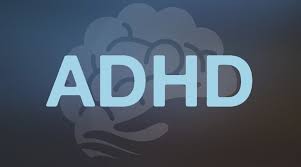Parenting is already a challenging journey, and when you add ADHD (Attention-Deficit/Hyperactivity Disorder) into the mix, it can become even more demanding. ADHD is a neurodevelopmental disorder that affects children’s ability to focus, control their impulses, and regulate their energy levels. Parenting a child with treatment ADHD requires patience, understanding, and a tailored approach to support their unique needs. In this guide, we’ll explore tips and strategies for navigating the complexities of raising a child with ADHD.
Understanding ADHD
Before delving into specific strategies, it’s crucial to understand what ADHD entails. ADHD is characterized by three core symptoms:
Inattention
Children with ADHD may have difficulty sustaining attention, following instructions, organizing tasks, and completing assignments.
Hyperactivity
They may exhibit excessive restlessness, fidgeting, difficulty staying seated, and impulsivity.
Impulsivity
Children with ADHD often act before thinking, interrupt others, and have trouble waiting their turn.
It’s important to recognize that ADHD is not simply a matter of willpower or discipline. It’s a complex neurobiological condition that requires understanding and support from parents, educators, and healthcare professionals.
Establishing Structure and Routine
Children with ADHD thrive in structured environments. Establishing consistent routines can help them feel more secure and in control. Here are some tips for creating structure at home:
Set Clear Expectations
Clearly communicate rules and expectations, and be consistent with consequences for both positive and negative behaviors.
Create a Routine
Establish a daily schedule for meals, homework, chores, and bedtime. Post the schedule where your child can see it.
Use Visual Aids
Visual schedules, charts, and timers can help children with ADHD understand and follow routines more effectively.
Encouraging Positive Behavior
Positive reinforcement is a powerful tool for shaping behavior in children with ADHD. Here are some strategies for encouraging positive behavior:
Praise and Encouragement
Offer specific praise for behaviors you want to encourage, such as staying focused on a task or following instructions.
Reward Systems
Implement a reward system, such as a sticker chart or token economy, where your child can earn rewards for completing tasks or demonstrating positive behaviors.
Consistency is Key
Be consistent with rewards and consequences to reinforce positive behaviors and discourage negative ones.
Providing Structure for Homework and Schoolwork
Homework can be a major source of stress for children with ADHD and their parents. Here are some strategies for making homework time more manageable:
Designate a Homework Space
Create a quiet, organized space free from distractions where your child can focus on homework.
Break Tasks into Manageable Chunks
Break assignments into smaller tasks and provide breaks to prevent overwhelm.
Use Visual Aids
Visual schedules, checklists, and timers can help your child stay on track and manage their time effectively.
Teaching Self-Regulation Skills
Children with ADHD often struggle with self-regulation, but these skills can be taught and practiced over time. Here are some strategies for teaching self-regulation:
Mindfulness and Relaxation Techniques
Teach your child relaxation techniques such as deep breathing or progressive muscle relaxation to help them calm down when they’re feeling overwhelmed.
Problem-Solving Skills
Help your child develop problem-solving skills by encouraging them to brainstorm solutions to challenges they encounter.
Model Self-Regulation
Model self-regulation skills by managing your own emotions and demonstrating coping strategies when faced with challenges.
Building Strong Relationships
Building a strong, supportive relationship with your child is essential for managing ADHD effectively. Here are some tips for fostering a positive relationship:
Active Listening
Take the time to listen to your child’s thoughts and feelings without judgment. Show empathy and validate their experiences.
Quality Time
Spend one-on-one time with your child engaging in activities they enjoy. This can help strengthen your bond and create opportunities for open communication.
Stay Calm
It’s natural to feel frustrated or overwhelmed at times, but try to remain calm and patient when dealing with challenging behaviors.
Seeking Support
Parenting a child with ADHD can be overwhelming, and it’s important to seek support when needed. Here are some resources that can provide assistance:
Therapy
Individual or family therapy can provide a safe space to explore feelings, learn coping strategies, and improve communication within the family.
Support Groups
Joining a support group for parents of children with ADHD symptoms can provide valuable guidance, encouragement, and a sense of community.
Educational Support
Work closely with your child’s school to develop an individualized education plan (IEP) or 504 plan that outlines accommodations and supports to help them succeed academically.
Conclusion
Parenting a child with ADHD presents unique challenges, but with patience, understanding, and the right strategies, it’s possible to provide the support and guidance they need to thrive. By establishing structure and routines, encouraging positive behavior, teaching self-regulation skills, building strong relationships, and seeking support when needed, parents can help their child navigate the complexities of ADHD and reach their full potential. Remember, every child is different, so be flexible and willing to adapt your approach to meet your child’s individual needs. With love, patience, and perseverance, you can empower your child with ADHD to succeed and flourish.




